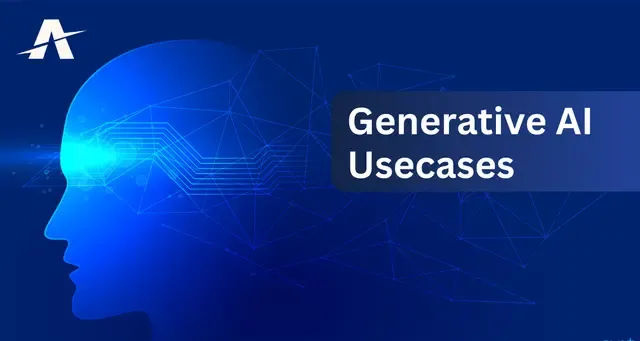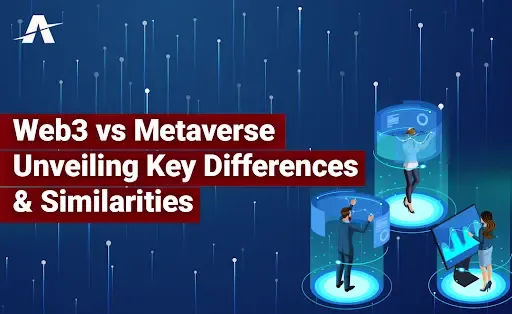
The Web3 wallet is technically a decentralized wallet or a blockchain wallet. This means that the Web3 wallet is basically a software application that allows its users to interact with the blockchain networks directly from their web browsers or mobile devices but unlike the traditional wallets that we are used to carrying and that store physical cash or digital payment methods, these Web3 wallets store cryptographic keys that grant access to the users' digital assets on the blockchain.
Here are some key characteristics of Web3 wallets:
Decentralization:
The Web3 wallets are only operational on decentralized networks such as Ethereum, Binance Smart Chain, and Solana. This guarantees that they wouldn’t in any way be relying on centralized intermediaries like banks or payment processors.
User Control:
The Users of Web3 wallets have full control over their private keys. The private keys that are provided are then used to sign the transactions and authorize every action on the blockchain. This kind of control in the hands of the users allows them to manage their digital assets independently without relying on any third-party services.
Interoperability:
Web3 wallets facilitate marketplace transactions and are therefore designed in such a way that they can interact with various blockchain networks and other decentralized applications (dApps). This typical feature is capable of allowing its users to seamlessly transfer assets, participate in token swaps, and also interact with smart contracts across different platforms.
Security:
The technology utilized in Web3 wallets facilitates the implementation of robust security measures. This enables the protection of funds and private keys of the users from any kind of unauthorized access or theft. The technology utilized for this purpose includes encryption, multi-factor authentication, and recovery mechanisms which would come into play when trying to restore access in case the keys are lost or stolen.
User Experience:
This being fairly a new concept even for the technically aware class of the world, the experience (UX) of the user is a very crucial aspect of Web3 wallet development. The Web3 wallet interfaces should thus be designed keeping this in mind and so they should be intuitive, easy to navigate, and also provide clear instructions to the users so that the users are easily able to manage their assets and interact with dApps.
Currently, the most popular examples of Web3 wallets in the marketplace include MetaMask, Trust Wallet, Coinbase Wallet and the Argent.
Giving convenience of access these Web3 wallets are available as browser extensions, mobile applications and even as hardware devices thus providing users with the much-required flexibility in deciding how they wish to access and manage their digital assets on the blockchain networks.
These Web3 wallets are sure to play a vital role in enabling individuals to participate in the decentralized economy securely and seamlessly.
Types of Web3 wallets
There are many types of Web3 wallets and each one of them is functionally designed to cater to different user preferences and varied functional cases. Some of the main types are:
Browser Extensions:
Browser extension wallets are among the most popular types of Web3 wallets. Examples are MetaMask and Trust Wallet. The Browser extension wallets are digital wallets that do integrate directly into web browsers like Google Chrome, Mozilla Firefox, and Brave. This form of integration allows the users to interact with various decentralized applications (dApps) directly from their own browser tabs.
These web extension wallets are equipped within themselves to provide a thoroughly user-friendly interface for managing all their digital assets and are also equipped for interacting with smart contracts. They do this securely by storing the private keys.
Browser extension wallets offer much-needed convenience and accessibility. This makes them an ideal choice for users who frequently interact with dApps on their desktop or laptop computers.
Mobile Wallets:
Mobile wallets are digital Web3 wallets that are functionally designed for use only on smartphones and tablets.
Examples are Coinbase Wallet, Argent and Trust Wallet* *Trust Wallet is available as both a browser extension and a mobile app,.
Mobile wallets are equipped to offer similar functionalities as the browser extension wallets but only that they are optimized to function for mobile devices by providing a seamless user experience on the smaller screens if mobile phones.
These digital wallets often include additional functional features for securing the wallets like biometric authentication (e.g., fingerprint or face recognition), and mobile-friendly interfaces and they also can integrate with mobile operating systems for enhanced security.Hardware Wallets:
Hardware wallets are Web3 digital wallets that are functionally designed to provide an extra layer of security for digital assets against any online threats.
Examples are Ledger Nano S, Ledger Nano X and Trezor. These actually are physical devices that store users' private keys offline.
These Hardware wallets are by many considered one of the most secure options for storing their digital assets when it is needed for the long-term as the security system of the Hardware wallets are functionally immune to malware and hacking attacks, a vulnerability that otherwise poses a threat to compromise software-based wallets.
Hardware wallets are an ideal choice for the class of users who tend to prioritize the security of their digital assets and are also willing to invest a little extra for a dedicated device that stores their cryptocurrency holdings.Desktop Wallets:
Desktop wallets are software applications installed on desktop or laptop computers, allowing users to manage their digital assets locally.
While Desktop wallets are not as popular as a browser extension or mobile wallets some of them do offer similar functionalities which could include asset management, transaction signing and also integration with other decentralized exchanges (DEXs) and dApps.Examples of desktop wallets are Exodus and Atomic Wallet.
Desktop wallets provide users with full control over their private keys and are absolutely suitable for that class of people who prefer to manage their digital assets offline or on devices with larger screens.Paper Wallets:
Paper wallets are physical documents or QR codes which contain the public and private keys of the users. This way Web3 wallets allow the users to store their digital assets offline.
Paper wallets are comparatively considered highly secure as they are found not susceptible to online attacks or hacking attempts. However, they do require to be carefully handled and maintained to prevent loss or any form of damage.
Paper wallets are thus often chosen as an option when it comes to long-term storage of large amounts of cryptocurrency. They also play a suitable choice for the class of users who prioritize the security of their digital assets and are only comfortable with offline storage methods.
Each type of Web3 wallet has its own advantages and limitations, so users should always carefully consider their preferences, their individual unique security needs and use cases when it comes to choosing a wallet that best suits their requirements.
Web3 wallets : successful use cases
The Web3 wallets are now facilitating numerous successful use cases as in decentralized finance (DeFi), non-fungible token (NFT), gaming and also in the decentralized application (dApp) ecosystems. The most notable examples of such successful use cases of Web3 wallets are :
Decentralized Finance (DeFi) Trading:
The Web3 digital wallets are being functionally designed to enable easy access to users of decentralized exchanges (DEXs) such as Uniswap, SushiSwap, and PancakeSwap right from the comfort of their browsers on computers and mobile devices.
Users of Web3 wallets are secured in trading cryptocurrencies and participate in yield farming and liquidity mining programs using their Web3 wallets. DeFi platforms also allow the usage of Web3 wallets for enabling users with permissionless and non-custodial trading, such as lending and borrowing on decentralized networks, providing greater control over their funds and financial privacy.
Non-Fungible Tokens (NFTs) Marketplace:
The well-known NFT marketplaces like OpenSea, Rarible, and Foundation allow users to buy and sell digital assets using their Web3 wallets.
Web3 wallets provide seamless integration with NFT platforms, allowing users to manage their NFT collections, view transaction history, and interact with smart contracts directly from their digital wallets. NFT creators and collectors use Web3 wallets to mint, list, and purchase digital art, fostering a vibrant ecosystem of digital ownership and creative expression.
Gaming and Virtual Worlds:
Web3 wallets enable users to access blockchain-based gaming platforms and virtual worlds, such as Axie Infinity, Decentraland, and CryptoKitties, to play.
Players can securely buy, sell, and trade in-game assets, participate in play-to-earn mechanics, and earn cryptocurrency rewards using their Web3 wallets. Gaming developers integrate blockchain technology into their games, enabling true ownership of digital assets and introducing novel gameplay mechanics powered by smart contracts.
Decentralized Applications (dApps):
Web3 wallets serve as gateways to a wide range of decentralized applications (dApps), including social networks, marketplaces, identity management, and decentralized governance.
Users can interact with dApps directly from their Web3 wallets, sign transactions, vote on governance proposals, and participate in community-driven initiatives without central intermediaries. Developers utilize Web3 wallets to build user-friendly interfaces and integrate wallet connect protocols, providing seamless onboarding experiences for users new to the decentralized web.
Charitable Donations and Fundraising:
Web3 wallet technology enables transparent and auditable charitable donations and fundraising campaigns on blockchain-based platforms like Gitcoin Grants and The Giving Block.
Users can donate by contributing cryptocurrency directly from their Web3 wallets to support various causes, including humanitarian aid, environmental conservation, and open-source development. Charities, nonprofit organizations, and individuals use Web3 wallets to receive donations, track donor contributions, and distribute funds transparently using smart contracts, ensuring greater accountability and trust in Web3 technology.
These Web3 wallets play a crucial role in unlocking the full potential of decentralized technologies, empowering users to participate freely in the digital economy, express their creativity, earn, and contribute to global causes securely and transparently.
Web3 wallets: challenges and their solutions
While Web3 wallets offer a number of benefits, they also face several challenges that need to be addressed to enhance not just the user experience and security but also the increased user base. Given below are some common challenges faced by Web3 wallets and also the potential solutions to mitigate them:
Usability and Onboarding Complexity:
Challenge: Web3 wallets are known to have very complex user interfaces and onboarding processes. This makes using them very challenging for new users to understand and navigate through the various processes.
Solution: A suggested solution is to improve its usability through a simpler intuitive design, more user-friendly tutorials, and friendly interactive guides that educate the new users on its key concepts. The concepts and complex processes of private key management, transaction signing, and interacting with decentralized applications (dApps) need assistance. It is also required to implement simplified onboarding processes with clear instructions and step-by-step guidance to help new users create and secure their wallets easily.
Security Risks and Loss of Funds:
Challenge: Another challenge is that the Web3 wallets are quite susceptible to security risks such as phishing attacks, malware, and theft of private keys. This adds to the potential risk of loss of funds for users.
Solution: The solution to this is to enhance security measures by implementing multi-factor authentication and biometric authentication. The integration into the hardware wallet is also a suggested solution as this would protect users' private keys. The solution also lies in educating users on the available best practices for securing their wallets. These could be enabling strong passwords, enabling two-factor authentication (2FA), and also storing backup recovery phrases securely offline. Collaborating with cybersecurity experts to audit wallet code and identify vulnerabilities, ensuring robust security standards is also a very good solution.
Scalability and Network Congestion:
Challenge: The complex technology of Web3 wallets does experience scalability issues and network congestion, especially during periods of high demand. This does result in slow transaction processing times and increased transaction fees.
Solution: A suggested solution is to implement scaling solutions such as layer 2 protocols (e.g., Optimistic Rollups, Plasma), sidechains, and off-chain scaling solutions (e.g., state channels). This would increase transaction throughput and reduce congestion on the blockchain network. Also incorporating the option of dynamic fee algorithms which adjust transaction fees based on network conditions would ensure timely confirmation of transactions at optimal costs for users.
Interoperability and Fragmentation:
Challenge: Web3 wallets also face interoperability challenges and fragmentation across different blockchain networks. This often leads to their fragmented experience and real-time difficulty in managing multiple assets across these disparate platforms.
Solution: The solution to this is to facilitate interoperability through many standardized protocols and cross-chain bridges. In fact, there could be interoperability layers that enable seamless asset transfer and enhance interoperability between different blockchain networks. Another solution is to develop universal standards for wallet interoperability, asset management, and cross-chain transactions. This would streamline user experience and reduce fragmentation. Also, collaboration with other wallet providers, blockchain projects, and industry stakeholders would establish common standards and interoperable infrastructure for the entire Web3 ecosystem.
Regulatory Compliance and Privacy Concerns:
Challenge: A big challenge encountered by Web3 wallets is that they must navigate regulatory compliance requirements. And equally address the privacy concerns of users which are related to data protection, identity verification, and anti-money laundering (AML) regulations.
Solution: Suggested solutions in this regard include the implementation of very robust privacy-guarding technologies such as zero-knowledge proofs, homomorphic encryption, and also stronger privacy-enhancing protocols to protect the sensitive information and transactional data of all the users. Some very strongly suggested solutions say that by developing robust compliance frameworks and risk management practices and thereafter also ensuring strict adherence to all the regulatory requirements, all the KYC (Know Your Customer) procedures and all the AML/CFT (Anti-Money Laundering/Combating the Financing of Terrorism) regulations. Suggestions also include collaboration with legal experts, regulators, and other industry associations to establish clear guidelines and best practices for all Web3 wallet providers so as to operate compliantly and responsibly within the regulatory frameworks.
Addressing these challenges with the suggested solutions and industry collaboration, the Web3 wallet providers would surely enhance the usability, security, and scalability of their platforms. This would foster broader adoption and trust in all the users of decentralized technologies.
Forecasting Web3 wallets trends
Forecasting the upcoming trends in Web3 wallets involves thoroughly considering all advancements in blockchain technology, user preferences, industry developments and regulatory landscapes. Here are some anticipated trends for Web3 wallets:
Enhanced User Experience:
It is forecasted that the future shall see the Web3 wallet providers focus on improving user experience through intuitive interfaces, seamless onboarding processes and personalized features customized to user preferences.
We are to see an integration of interactive tutorials, educational resources, new games and upgraded elements will help onboard new users and educate them about blockchain technology and the concepts of decentralized finance (DeFi).Multi-Chain Support:
With the growing popularity of multi-chain ecosystems, it is forecasted that Web3 wallets will soon be offering support for multiple blockchain networks which would enable users to manage diverse assets across different chains from a single interface.
Wallet providers will soon integrate cross-chain interoperability protocols and bridges to facilitate seamless asset transfer and cross-chain transactions which would further enhance liquidity and usability for users.Decentralized Identity Management:
In the coming future Web3 wallets will be playing a key role in decentralized identity management which would be allowing users to control their digital identities, personal data and access rights securely on the blockchain.
Soon the integration of decentralized identity standards such as Decentralized Identifier (DID) and Verifiable Credential (VC) protocols will be enabling users to authenticate, verify and share their identity information in a privacy-preserving manner.Privacy-Preserving Features:
Web3 wallets will soon incorporate privacy-preserving features such as zero-knowledge proofs, stealth addresses and ring signatures to protect users' transactional privacy and anonymity.
It is forecasted that the integration of privacy-enhancing technologies (PETs) will very soon enable users to conduct confidential transactions, shield their financial activities and maintain privacy in decentralized applications (dApps) and DeFi platforms.NFT Integration and Digital Collectibles:
The next future will see Web3 wallets expand their support for non-fungible tokens (NFTs) and digital collectables which would then enable users to manage, showcase and trade unique digital assets seamlessly.
It is forecasted that the integration of NFT marketplaces, discovery tools and social features will soon enhance the NFT experience within Web3 wallets which is sure to foster a more vibrant ecosystem for digital art, gaming items and virtual collectibles.DeFi Aggregation and Yield Optimization:
Web3 wallets will soon be offering DeFi aggregation services thus is going to allow users to access decentralized finance protocols, liquidity pools and yield farming opportunities from a single unified interface.
The next future shall also see the integration of automated yield optimization strategies, decentralized autonomous organizations (DAOs) and algorithmic trading tools empowering users to maximize their returns and optimize their DeFi investments more efficiently.Security and Custody Solutions:
Web3 wallets will very soon be prioritizing security and custody solutions to protect the funds and assets of users from theft, hacks and any form of unauthorized access.
We are also going to see better adoption of hardware wallet integration, multi-signature authentication and cold storage solutions. This move will enhance the security of Web3 wallets and shall provide all users with peace of mind and trust in their digital assets.Regulatory Compliance and Compliance Tools:
Web3 wallets are in the process of implementing compliance tools and regulatory frameworks to ensure adherence to global regulatory requirements, KYC (Know Your Customer) procedures and anti-money laundering (AML) regulations.
The integration of identity verification services, transaction monitoring tools and regulatory reporting mechanisms will very soon enable Web3 wallet providers to operate compliantly and transparently within the regulatory frameworks.
It is rightly forecasted that Web3 wallets will continue to evolve and innovate to meet the needs and expectations of users in an increasingly decentralized and interconnected digital economy. This is bound to drive more adoption and democratization of blockchain-based financial services and digital assets.
So we see, the art of Web3 wallet development combines technical mastery with creativity, empathy and an honest commitment to advance the principles of decentralization. By embracing these principles and dedicatedly pushing the boundaries of innovation, web3 wallet developers are sure to shape the future of finance and contribute to the ongoing evolution in achieving the fundamental goal of decentralized economies which is user empowerment!












